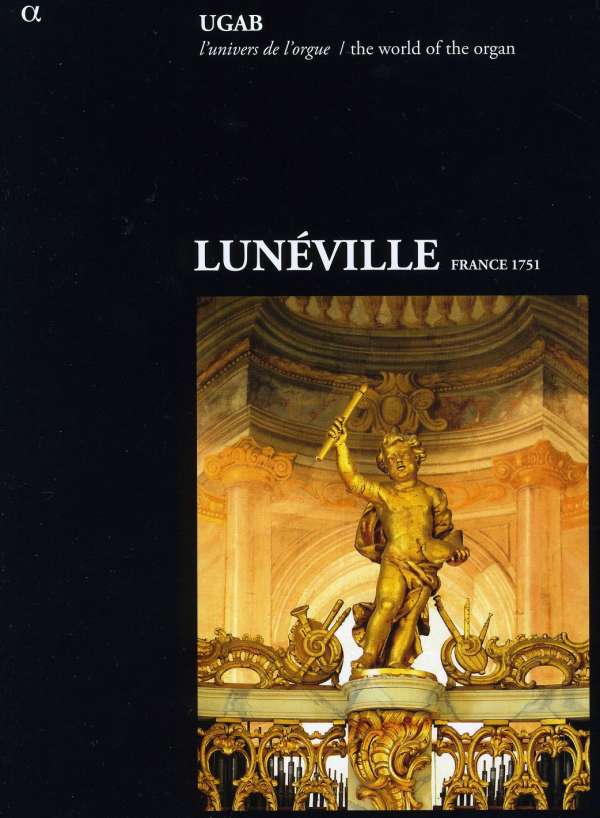
kompozytor
różni kompozytorzy
tytuł
Transcriptions Pour Orgue-Luneville
pełny spis kompozytorów
Franck, Cesar;
Lully, Jean-Baptiste;
Widor, Charles-Marie;
Desmarest, Henry;
Guilmant, Alexandre;
Daquin, Louis-Claude
Lully, Jean-Baptiste;
Widor, Charles-Marie;
Desmarest, Henry;
Guilmant, Alexandre;
Daquin, Louis-Claude
wykonawcy
Désenclos, Frédéric
nr katalogowy
Alpha 651
opis
This second volume in the collection Ugab (first mention of the organ in the Bible) presents the exceptional instrument of Lunéville. With its concealed pipes, the organ reveals its various aspects over time (from baroque to late romanticism), played by Frédéric Desenclos, founder and director of the Ens Pierre Robert. In line with the work of Yves Rechsteiner, Frédéric Desenclos brings us a couple of unpublished transcriptions, tying in with the tradition of organ players. This surprising collection, with an extended editorial content, comes to prove than organ music is more alive than ever! 67pp booklet in French & English including: Notes on the music An interview with Frédérick Desenclos Beautiful colour photographs or the church and organ loft Notes on the organ registration Birth & rebirth of the Lunéville organ Iconography of the organ loft Nicholas Dupont, designer of the organ An Organ Case With Concealed Pipes The Only Known Example Composition: The instrument was listed as a Historic Monument on 28 February 1986. Within the framework of a general restoration of the organ and its case, the instrumental part was dismantled in spring 1991 by Laurent Plet and stored in boxes in the two side chambers of the gallery. The organ case and fresco were restored between 1993 and 1998. For the instrument itself, it was decided not to return to an existing state, whether that of 1751, 1852, 1882 or 1893, but to create a new state integrating all the elements by Dupont and Jeanpierre as effectively as possible. It was not a restoration in the strict sense of the term, but a re-creation involving a harmonious juxtaposition of the various early strata. This enabled the recovery of almost all of Dupont s organ and Jeanpierre s organ, without sacrificing one to the other. The juxtaposition was possible thanks to the fact that Jeanpierre had retained the same tuning pitch as Dupont, B flat. The project thus involved re-creating a completely new Positif de Dos, with Dupont s composition but over 54 notes, restoring Jeanpierre s Grand-Orgue with a few more Classical inflections in the composition, and also restoring the Positif Intérieur, Récit Expressif and Pédale to the 1852 state. This difficult operation was entrusted to Bertrand Cattiaux, who chose to work with Laurent Plet, for the restoration of the early pipework, the construction of the new pipework based on the old, and participation in the harmony. The reconstructed organ now has 56 stops on four complete manuals and pedal.
nośnik
SACD
gatunek
Muzyka klasyczna
producent
Alpha
data wydania
01-12-2010
EAN / kod kreskowy
3760014196515

(Produkt nie został jeszcze oceniony)
cena 79,00 zł
lubProdukt dostepny w niewielkiej ilości.
Wysyłka w ciągu 3 dni roboczych
Darmowa wysyłka dla zamówień powyżej 300 zł!
Darmowy kurier dla zamówień powyżej 500 zł!
sprawdź koszty wysyłki








































